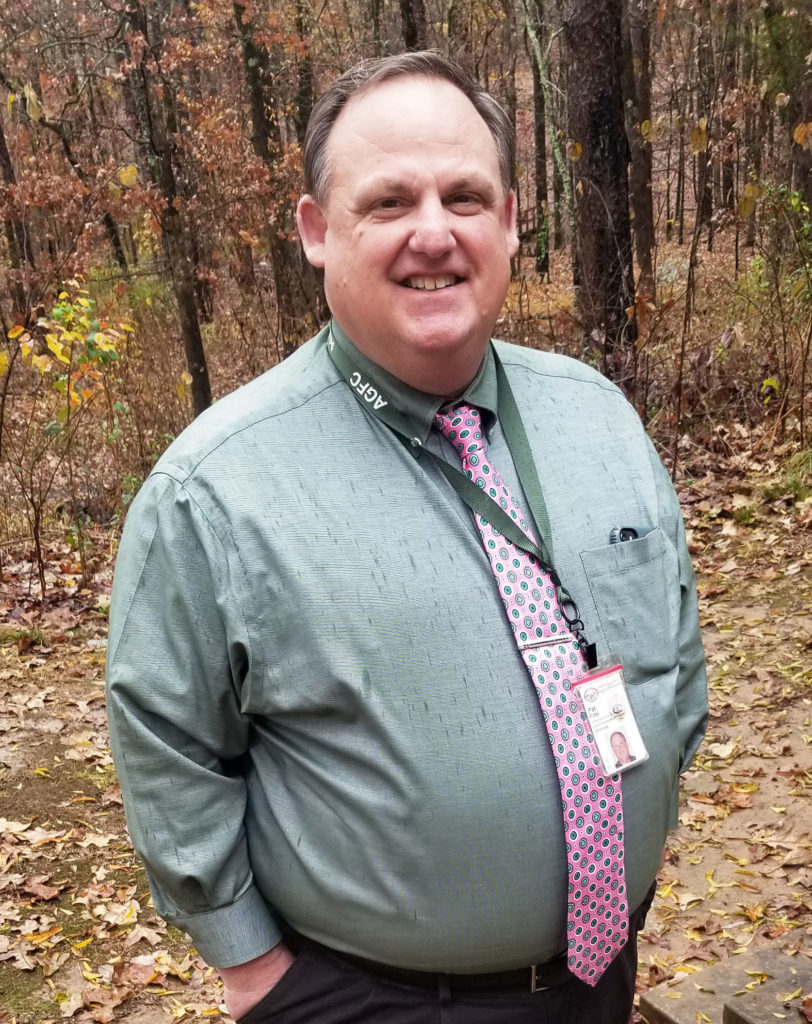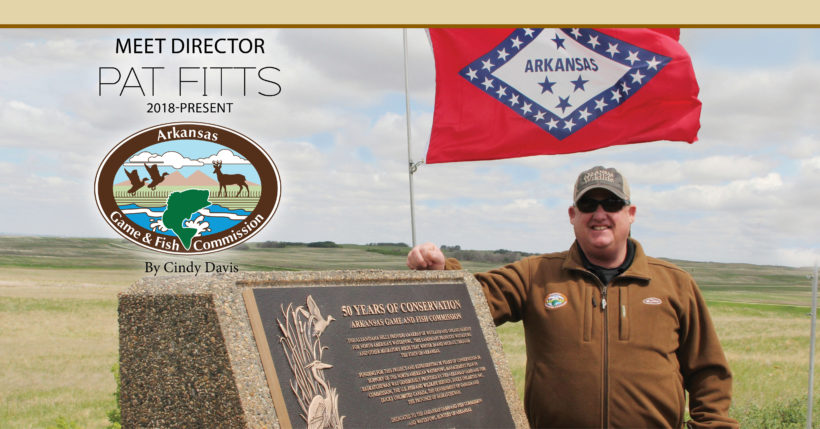Elk, bear, deer, alligators, buffalo and hundreds of other species of wildlife and fish were abundant in the early years of Arkansas’ statehood. By the early 1900s, Americans spreading west began replacing vast forests with cities, cropland and pastures. Machines and factories replaced hand labor and small shops. Travel by foot, paddle and horse gave way to vehicles and vessels. Wildlife had changed too. Elk, bison, swans, prairie chickens and passenger pigeons were gone from the state. Duck, quail, deer, black bears and fish were much harder to come by. Something had to be done.
The Arkansas Game and Fish Commission was created in 1915, with a mission to conserve and enhance Arkansas’s fish and wildlife and their habitats while promoting sustainable use, public understanding and support.
The commission started with nine-game wardens that were hired for $80 a month and they even had to furnish their own horses. After World War II, biologists were added to expand the commission’s focus from primarily the enforcement of wildlife regulations to active habitat and species management.
Since the commission’s inception in 1915, Arkansans have seen wildlife in Arkansas rebound from dangerously low populations to rival the days when the state’s bounty seemed endless. As it turns 105, its role as the state’s leader in enforcing wildlife regulations, habitat management, public land access, conservation education and protection of non-game species continues to grow.
A few of the major accomplishes of the
last century include:
- The building of one of the oldest and largest fish hatchery systems in the country
- White-tail deer rebound from a few hundred in the ’40s to annual harvest over 200,000
- The introduction of trout to federal dam tailwaters, where native warm-water fish could no longer thrive.
- Helping to make the Buffalo River the First National River and saving it from development
- The reintroduction of black bears in Arkansas is considered the most successful reintroduction of a large carnivore in the world
- Building and expanding public access to anglers to more than 600,000 acres of lakes and 100,000 miles of rivers and streams
- Creation of the WMA system and cooperatively managed public land to 3.2 million acres
- Expanding programs to support private landowners for wildlife habitat
- Development of hunter education, boating education and shooting sports programs
A single organization has not executed these efforts. Arkansas’s conservation success is a product of many people with many goals, culminating in thriving wildlife and fish throughout The Natural State. However, one man sits at the helm of the states leading conservation agency. As the Director of AGFC, Pat Fitts is steering the states leading conservation organization into the future. Fitts was appointed to serve as the 18th Director of the AGFC in January of 2018. His diversified career in wildlife conservation, long-term leadership in AGFC and his visionary leadership for the future of the agency make Pat Fitts the right fit at the right time to lead AGFC.

Pat Fitts never imagined he would be the Director of the Arkansas Game and Fish Commission, but he feels his paths in life lead him where he was meant to be.
“After high school graduation, I had talked myself into holding off on college and seeing what the future held for me. Then one day I was working at the AGFC fishery near Lonoke with a young man named Lingo, who was in his first year of college. It was a hot summer day and we had already shucked off our shirts and stood in an old flat bottom boat putting out chemicals in a pond. I told Lingo ‘I am gonna wait a year or so for college, right now I’m living the dream, making $6,000 a year what more do I need?’
“Pat think, we’re putting chemicals out on a pond with the heat beating down on us and if you stay at this, not looking to go forward with your life, before long you’ll find yourself a crippled ole man.” said, Lingo.
“I heard him loud and clear. So, my story began that day. I’m truly living the dream. You need to keep moving forward, never wait, always look forward!”
And that’s precisely how Pat’s life has been. He knew after college, he wanted to be a part of the AGFC, and the rest is history.
“Because of David Lingo, I went on to get a college degree, met my wife, Alice, and started from the ground up as a biologist and later transitioning to the enforcement division as a wildlife officer, I loved it. From my young days as a teenager working during the Summer months at fisheries mowing pond levees–to my field days as an officer, the AGFC has always been in my blood.” I was catching bad guys, getting to work with the public solving problems, planting food plots, and spending time and effort to make things better for our wildlife. Each time I was promoted, I never saw it as another step towards the director. It wasn’t something I set out to become. But my service to the agency, the resources of Arkansas and Arkansans led me here.”
Pat’s experience gives him the ability to see the bigger picture the agency has needed. Not quick to judge, but instead gathers up the facts to issues that arise so that a more informed decision can be made that affect the tasks that lie ahead for the AGFC.
“I’m proud of the agency and what we do: It’s a total group effort, we are responsible for millions of acres and the wildlife that calls it home. The things we do can’t be measured in money, knowing we are making a difference for the outdoors is the passion that drives us.
AGFC faces many conservation challenges:
- Rapid urbanization and an alarming loss of habitat
- The decline in quail and turkey populations.
- Maintenance of the existing infrastructure of conserved lands, dams and waterways.
- The financial and natural resource impact from the 15% decline in resident hunters and an 18% decline in resident anglers.
- A growing number of rare species of greatest concern (377) in our Statewide Wildlife Action Plan.
- Significant forest health issues across the 49 public Greentree reservoirs impacting more than 50,000 acres of flooded habitat for waterfowl and world-renowned hunting opportunities.
- The negative impacts on infrastructure and natural resources from the frequency of record flood events
- Diversifying public land usage for a new breed of outdoor recreation activities.
- Identifying new revenue sources to fill the growing funding gap.
- Responding to emerging wildlife diseases and invasive species.”
The AGFC remains on the front lines of Arkansas conservation, determining best practices, planning for the future and finding ways to stretch funding. It works with other state agencies and private organizations to ensure that natural resources remain in place for future generations. The players tasked with this stewardship recognize the significance of their charge, both from a sustainability standpoint and a financial one. Arkansas is the Natural State, our connection to the land and water is ingrained in our culture. Outdoor recreation fueled by conservation is a catalyst for enjoyment, economic growth and prosperity across the state.

